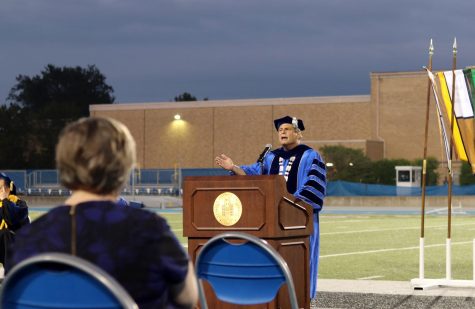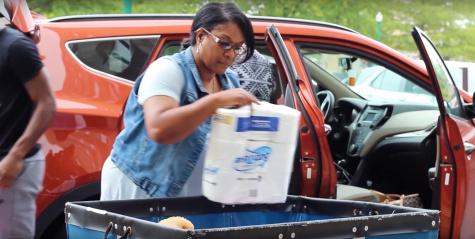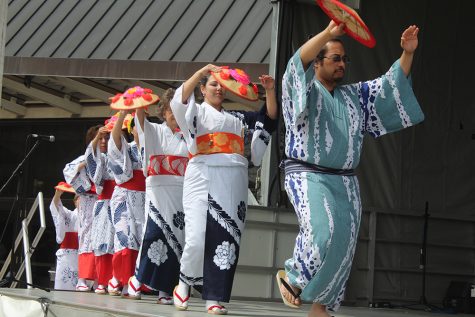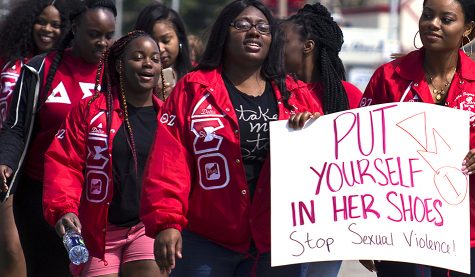Policy Academy allows citizens to learn from officers
Editor’s Note: This is the first article in a 15-part weekly series detailing Associate Online Editor Adam Testa’s experiences in Charleston’s Citizens Police Academy program.
My involvement with Charleston’s Citizens Police Academy began in May while I worked as city editor for the summer edition of The Daily Eastern News.
During a meeting with City Manager Scott Smith, I was informed that the program would be ending its first run the next week. I then began researching the program and talking to people involved.
The program sounded like an opportunity that would be something I would be highly interested in. Then I found out they would be offering the program again in the fall. I knew that I wanted to participate in it.
The Citizens Police Academy is a 15-week program in which 15 Charleston residents learn from members of the Charleston Police Department and other city and area officials. The main purpose of the program is to allow citizens to learn about the role of the Police Department and to open lines of communication between the two groups.
Upon arriving at the police station the first night, I began to meet the other individuals who would be going through the Academy with me. Our group is a diverse group, comprised of six men and six women of varying ages. Two members were absent on the first evening.
For the first night of the program, we met in a classroom setting in the basement of the police station. Mark Jenkins, deputy chief of administration, talked to the group about the basics of the department.
“The fun will start next week,” Jenkins said.
Jenkins presented a schedule of events and topics that will be discussed in the next fourteen weeks of the program. Among the topics were use of force training, drug training, firearms training, crime scene processing and simulated traffic stops.
“Some of them turn into shooting situations,” Jenkins said about the simulated traffic stops. “Somebody’s going to get shot.”
Jenkins also said that the department is hoping to be able to offer Fire Arms Simulation, known as FAS, which allows participants to find themselves in deadly force situations.
The FAS system works by projecting photos on walls and surfaces and arming participants with laser guns to see how they react.
“It tests if you shoot the right people, or if you kill innocents,” Jenkins said. “It shows how you would handle the situations.”
For the introductory first meeting, topics of discussion revolved around the structure of the police departments, general information about the department and basic training procedures for police officers.
In the Charleston Police Department, there are 33 officers, only one of whom is a female. The average age of the officers is 36.87 years old, and he has 9.84 years experience. Four have high schools diplomas, 14 have some college experience, two have associate’s degrees, nine have bachelor’s degrees and one, Police Chief Paul Welch, has a master’s degree.
A major issue facing police departments across the state is a decline in the number of people applying.
“When I tested in 1977, I was one of 90 applicants,” Jenkins said. “This last time around, there were 14.”
While no one can really explain the large decrease, Jenkins said he has his theory.
“The Gen X’ers don’t have the commitment,” he said. “Kids today want instant gratification for what they do.”
Jenkins said that new officers come in wanting to be made a lieutenant, make a large salary and not work weekends right away after getting hired.
In order to become a police officer, applicants have to go through an extensive process. First, they must pass a written test in addition to a physical exam. After that and a series of interviews, they may be offered the job, but the hard work does not end there.
Officers in training must dedicate 480 hours to go through a Police Training Institute. They also go through 14 weeks of a field training office in which they learn how to deal with all types of situations.
The cost to the department for training a new officer is $32,452.53.
The department’s budget in 2005 totaled $2,524,246, of which 83 percent, or $2,097,889 is spent on personnel.
One difficult task for the department is to improve and replace old equipment without putting a huge spike in the budget for one year, Jenkins said.
Recently the department has purchased new squad cars and replaced parts of them. One change that has been implemented is that the wire screens in the cars have been replaced with glass.
“People don’t think about it, but the people in the back could spit on you,” Jenkins said in reference to the wire screens.
The next improvement Jenkins wants to make is to have mounting capabilities in the squads for both rifles and shotguns. Shotguns would likely be loaded with beanbags for situations that did not require deadly ammunition, Jenkins said.
Next week we will be meeting at the department’s firing range and training facility, where we will be learning use of force tactics, defense techniques and handcuffing.
After our first meeting with the Academy, I continue to be excited for the possibilities and opportunities that lie ahead.








































